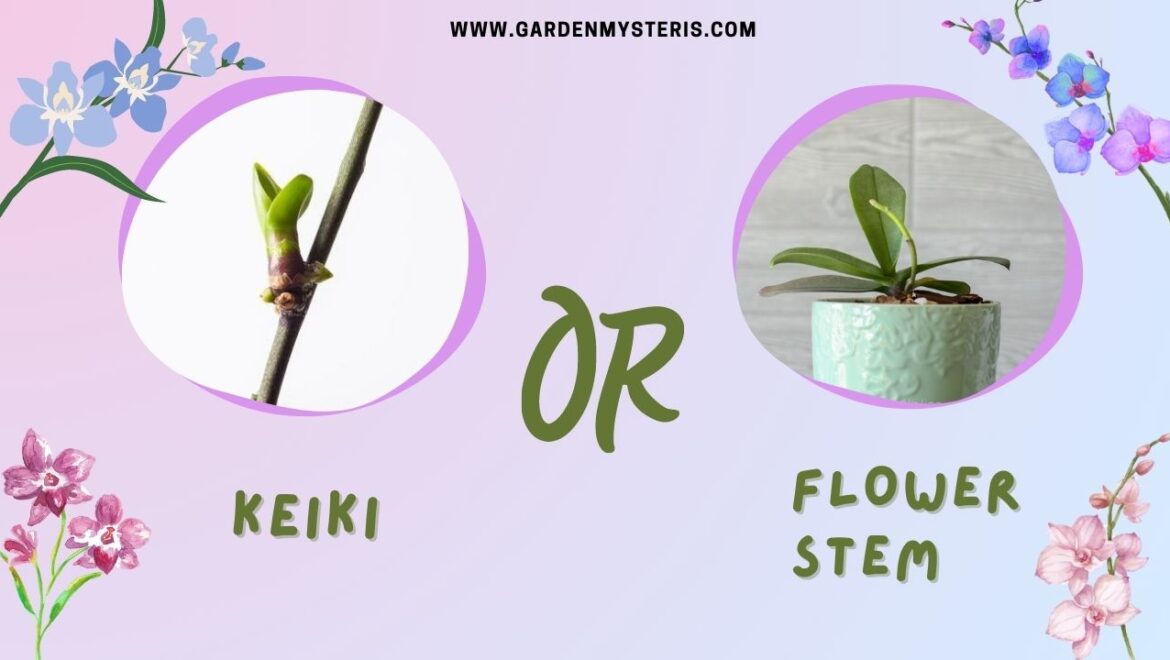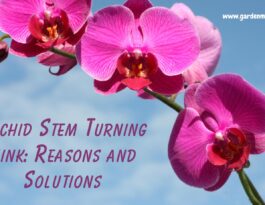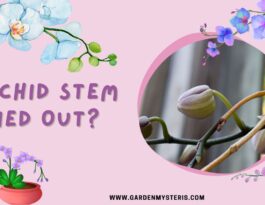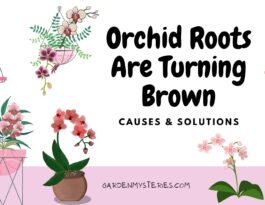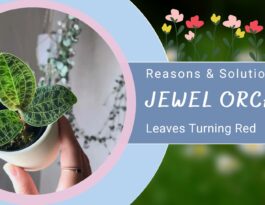Orchid lovers often ask, ‘How do I distinguish an orchid keiki or flower spike?’ The difference is keikis resemble small plants with leaves, while flower spikes are elongated stems that bear buds and eventually bloom.
Keikis grow along the stem, while flower spikes emerge from the base of the orchid. Let’s get into the core discussion in the next phases.
What Is An Orchid Keiki?
An orchid keiki (pronounced kay-kee) is a vegetative shoot or baby plant that develops on the nodes or joints of the flower spike or along the stem of a mature orchid plant.
The word “keiki” is derived from Hawaiian, meaning “child” or “baby.” Keikis are essentially clone-like replicas of the parent plant and are capable of developing into a mature orchid if provided with the right conditions.
What Kind of Orchids Have Keiki?
Many types of orchids have the ability to produce keikis. However, some orchid genera are more known for their propensity to produce keikis than others. Here are some common orchid genera that are known to produce keikis:
- Phalaenopsis (Moth Orchids): Phalaenopsis orchids are one of the most popular and widely cultivated orchids. They are known for their long-lasting flowers and their propensity to produce keikis along their flower spikes or on the nodes of their stems.
- Dendrobium: Dendrobium orchids come in various sizes and forms. Many Dendrobium species and hybrids can produce new orchid spikes on their canes or stems, which, when mature, can be separated and grown into new plants.
- Vanda: Vanda orchids are highly sought after for their striking, colorful flowers. They are epiphytic orchids, and some Vanda species are known to produce keikis on their aerial roots or along their flower spikes.
- Epidendrum: Epidendrum orchids are a diverse group with a wide range of species. Some Epidendrum varieties produce keikis on their flower spikes or along their stems.
- Phragmipedium (Lady Slipper Orchids): Some Phragmipedium species have been observed to produce keikis at the base of the plant or on the flower spike.
- Cattleya: Cattleya orchids are popular for their large and fragrant flowers. While not all Cattleya species produce keikis, some varieties have been known to do so.
- Oncidium: Oncidium orchids, also known as “Dancing Lady” orchids, are admired for their vibrant, cascading blooms. Certain Oncidium hybrids and species can occasionally produce keikis.
- Brassia: Brassia orchids, often referred to as “Spider Orchids” due to their unique flower shape, have been observed to produce keiki or spikes in some instances.
- Miltoniopsis (Pansy Orchids): Miltoniopsis orchids are prized for their pansy-like flowers. While not all Miltoniopsis species produce keikis, some have been known to do so under specific conditions.
It’s important to note that not all individual plants within a species or genus will produce orchid keiki or flower spikes. Moreover, the ability to produce keikis can also be influenced by environmental factors, genetics, and the overall health of the plant.
Additionally, some orchid hybrids may have inherited the ability to produce keikis from their parent species. Regardless of the type of orchid you have, if you notice a keiki developing, providing proper care and attention can increase its chances of growing into a healthy, mature plant.
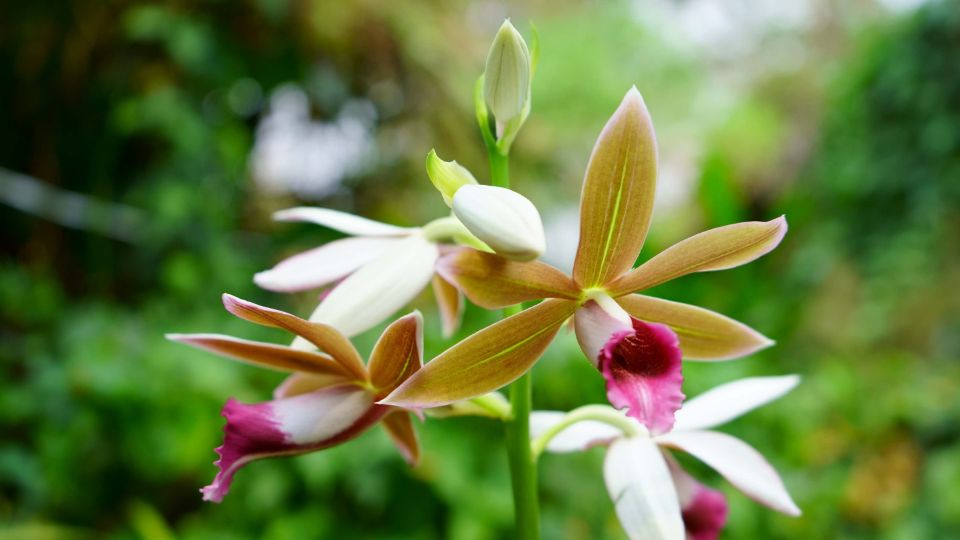
How to Recognize a Flower Spike?
Recognizing a flower spike on an orchid is essential for understanding its growth and blooming patterns. Here are the key characteristics that can help you identify a flower spike:
- Location: Flower spikes typically emerge from the base of the orchid plant, near the junction where the leaves meet the stem. Depending on the orchid species, the spike may also emerge from a node along the stem.
- Shape and Appearance: Flower spikes are tall, slender, and elongated structures. They grow upright, reaching for the light, and can vary in length depending on the orchid species. Some spikes are straight, while others may have a slight curve.
- Buds: As the flower spike develops, small buds will begin to appear along its length. These buds will eventually open into flowers. The number of buds can vary, with some orchids producing only a few, while others can have numerous buds on a single spike.
- Timing: The appearance of the flower spike is usually an indication that the orchid is entering its flowering phase. The timing of spike development can vary depending on the orchid species, its growing conditions, and the time of year.
- Color: In some orchid species, the developing flower buds may have a different color than the rest of the spike, making them stand out and easier to identify.
- Growth Direction: Flower spikes will grow in an upward direction, towards the light source. They are typically distinct from the leaves and roots, which grow outward or downward.
- Lack of Leaves: Flower spikes are primarily composed of stem tissue and do not have leaves. If you observe an elongated structure without leaves emerging from the base of the orchid, it is likely a flower spike.
- Persistence: Once the flower spike has fully developed and bloomed, it will remain on the plant for some time. Depending on the orchid species, the spike may remain on the plant for several weeks or even months, producing flowers sequentially or simultaneously.
Keep in mind that not all orchid species have distinct flower spikes. Some orchids, like Phalaenopsis (moth orchids), produce flower spikes that are intertwined with the leaves, making them less noticeable.
In contrast, others, such as Cattleyas, have more prominent and elongated spikes. Knowing how to recognize a flower spike can be rewarding for orchid enthusiasts, as it allows them to anticipate and enjoy the upcoming bloom of their plants.
So, proper care and attention during the flowering phase will ensure that your orchids display their beautiful blossoms to their fullest potential.
Comparing Keikis and Flower Spikes: Differences At a Glance
Here’s a table comparing the key differences between keikis and flower spikes in orchids:
| Characteristic | Orchid Keiki | Flower Spike |
| Location | Develops along the stem/nodes | Emerges from the base of the plant |
| Appearance | Resembles a small plant | Tall, elongated stem with buds |
| Purpose | Potential new individual plant | Blooms and produces flowers |
| Reproduction | Asexual (clone of a parent) | Sexual (produces seeds) |
| Development Time | Slow growth over time | Rapid growth during flowering |
| Leaves | Has its own leaves | Lacks leaves, primarily stem |
| Duration on Plant | Can remain attached for years | Withers and falls off after blooming |
| Parent Connection | May be attached to the parent plant | Fully separate from the parent |
| Care and Attention | Requires special care to grow | Regular care during flowering |
Please note that the development and characteristics of keikis and flower spikes can vary between different orchid species and hybrids.
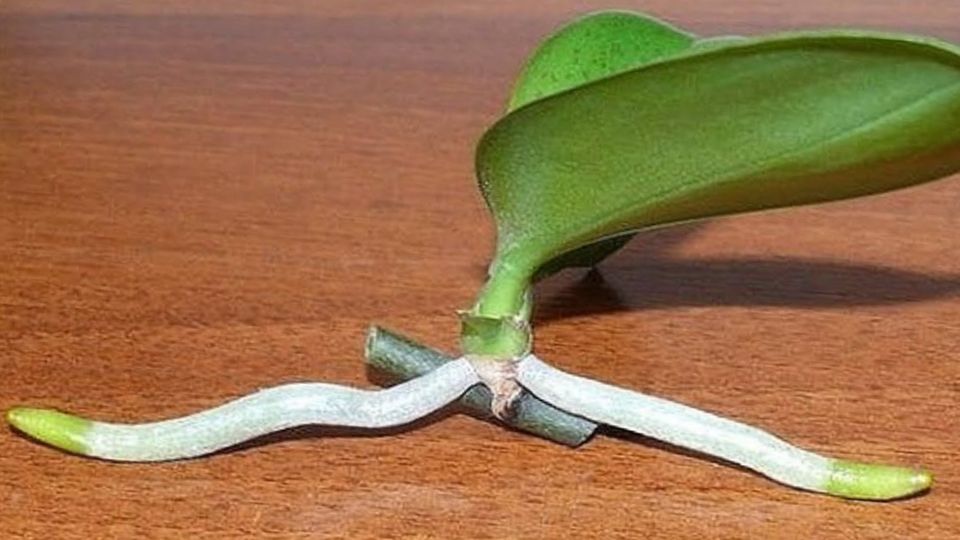
How to Take Care of Orchids with Keiki
Caring for orchids with keikis requires special attention to ensure both the parent plant and the keiki thrive. Here’s a step-by-step guide on how to take care of orchids with keikis:
Step 1: Leave the Keiki Attached
Allow the keiki to remain attached to the parent plant until it has developed several strong roots and is capable of sustaining itself. This may take several months, depending on the orchid species and the keiki’s growth rate.
Step 2: Provide Adequate Light
Orchids generally prefer bright, indirect light. Ensure the keiki receives appropriate lighting without being exposed to direct sunlight, which can scorch its delicate leaves. Then, place the orchid near a window with filtered sunlight or use artificial grow lights suitable for orchids.
Step 3: Maintain Proper Humidity
Orchids thrive in humid environments. Consider using a humidity tray, or a humidifier, or regularly misting the plants to maintain the humidity levels around the keiki. Also, higher humidity levels will promote healthy root growth.
Step 4: Watering
Orchids should be watered appropriately, allowing the potting medium to dry slightly between waterings. When watering, avoid getting water directly on the keiki’s leaves and roots. Too much moisture around the keiki can lead to rot.
Step 5: Fertilization
Now, use a balanced orchid fertilizer at a diluted strength to feed both the parent plant and the keiki. Follow the manufacturer’s instructions for frequency and application. Fertilize the orchids during their active growing periods and reduce or stop fertilizing during the rest period.
Step 6: Provide Adequate Air Circulation
Good air circulation is essential for preventing fungal and bacterial issues in orchids. Make sure the orchid and keiki have enough airflow without being exposed to drafts.
Step 7: Potting
Once the keiki has developed sufficient roots (around 2-3 inches long) and has a few mature leaves, it can be carefully separated from the parent plant. Use a clean, sharp knife or scissors to cut the keiki from the parent plant, ensuring that it has enough roots to support itself.
Step 8: Potting Medium
Subsequently, re-pot the keiki in a suitable orchid potting mix. Orchids prefer well-draining media like bark, sphagnum moss, or a mix specifically designed for epiphytic orchids. Place the keiki in its new pot and gently fill the gaps with the potting mix.
Step 9: Post-Potting Care
After potting, provide the keiki with a bit of extra humidity and keep it in a warm, stable environment to aid its recovery. Avoid direct sunlight for the first few days to prevent stress.
Step 10: Adjust Care Routine
Once potted, care for the keiki as you would for any young orchid plant. Also, monitor its watering needs, light exposure, and humidity levels. Gradually transition the keiki to the regular care routine of mature orchids.
Step 11: Patience
Orchids take time to adapt to new environments and grow. Be patient and give the keiki time to establish itself in its new pot.
Not all orchid keiki or flower spikes will successfully grow into mature plants. Some may fail due to various factors, including genetics or environmental conditions.
However, with proper care and attention, you increase the chances of your keiki growing into a healthy, blooming orchid. Enjoy the process of nurturing these miniature versions of their parent plants into beautiful, independent individuals.
If you are thinking about homemade fertilizers, you can check out our suggestions on Homemade Fertilizers.
FAQs
Are keikis and flower spikes related?
Keikis and flower spikes serve different purposes in the orchid’s life cycle. Keikis are asexual clones of the parent plant, whereas flower spikes are reproductive structures that produce seeds.
Do all orchids produce keikis or flower spikes?
Not all orchids produce keikis or flower spikes, and the frequency of their occurrence can vary between orchid species and hybrids. Some genera, like Phalaenopsis and Dendrobium, are more likely to produce keikis.
How can I care for an orchid with a keiki?
To care for an orchid with a keiki, leave the keiki attached to the parent plant until it develops strong roots and leaves. Provide adequate light, humidity, and water. Once mature, carefully repot the keiki into its own pot and care for it as a separate orchid.

